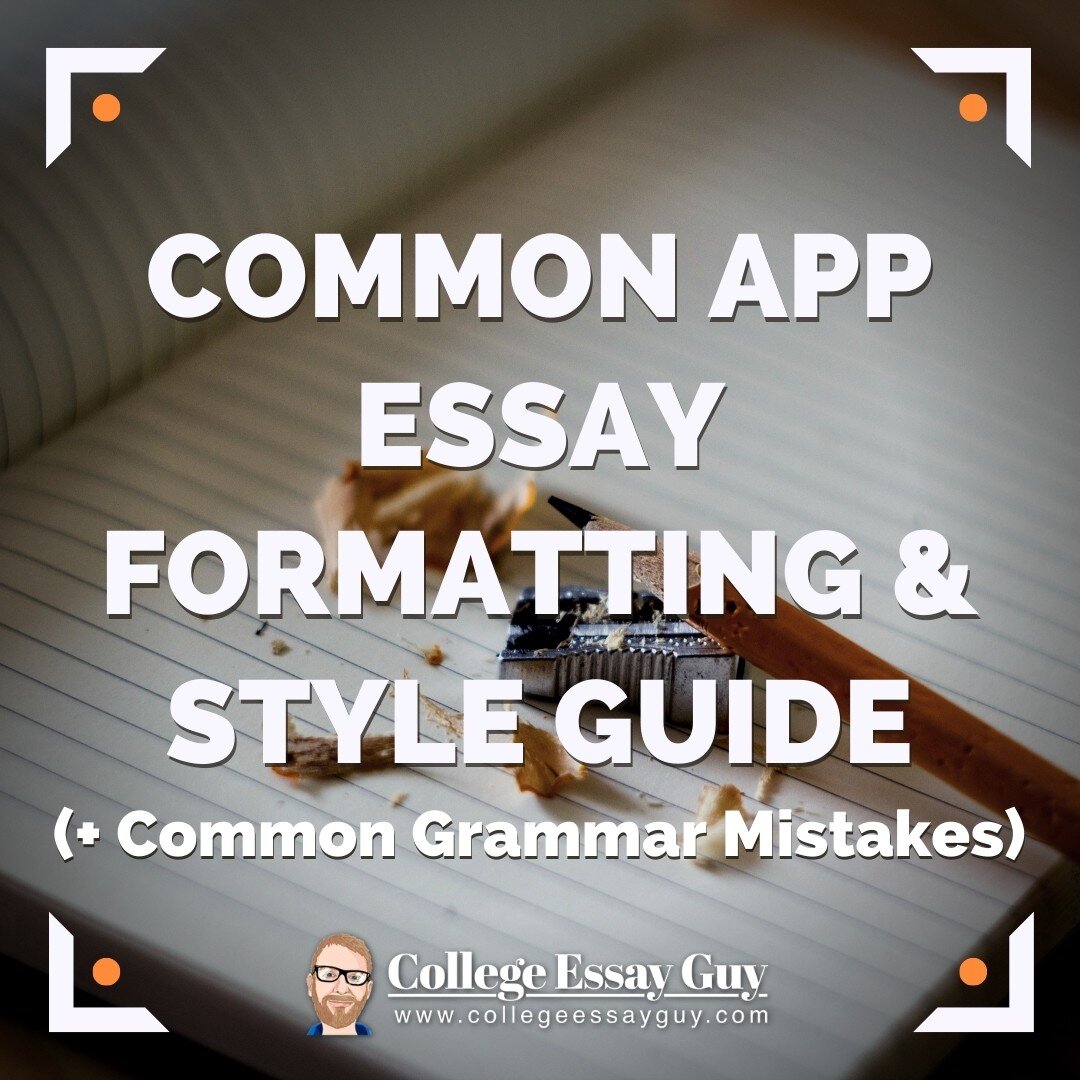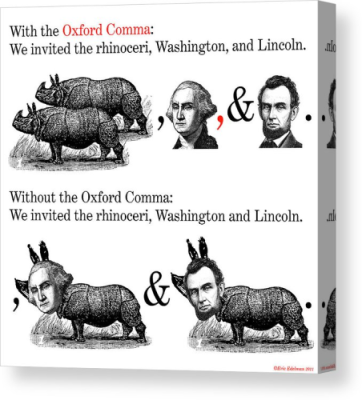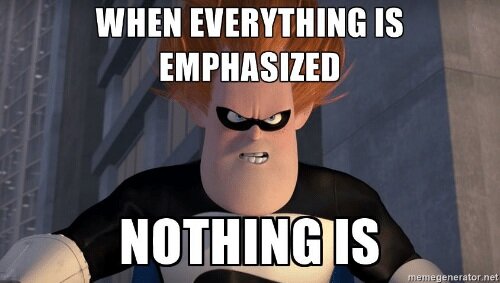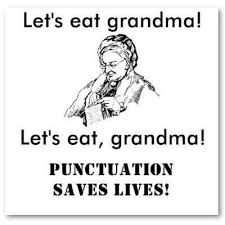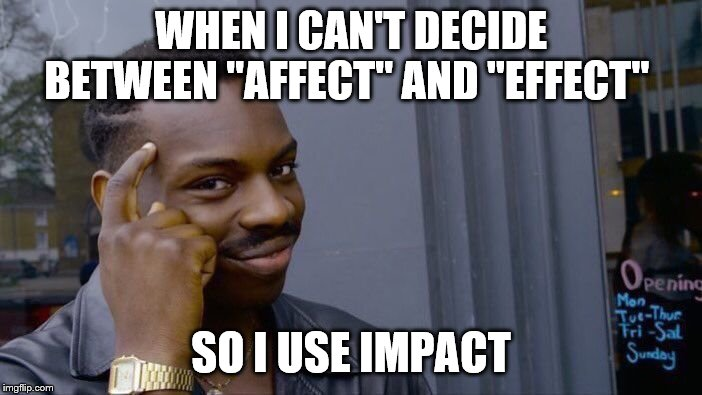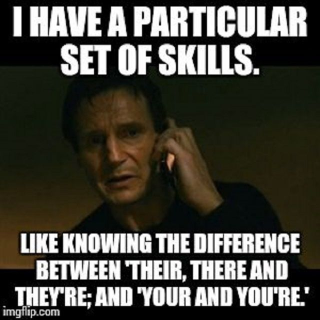This guide to how to format the Common App essay and other college essays is dedicated to helping you take some of the guesswork out of punctuation, style, grammar. We’ll also share some common college essay grammar mistakes students make and show you how to fix them.
How to use the guide: We recommend skimming the document, reading the sections most relevant to you, then returning periodically, as a reference, as you write your essays. Use Ctr+F to find something in particular, or scan the Table of Contents for links that’ll take you right to what you’re looking for. To make it easier for you to skim, we’ve listed the top mistakes and style questions first, in order of what we see most often, then list the rest, in alphabetical order.
Table of Contents
- 10 Common College Essay Grammar Mistakes & Style Questions
- Dangling/Misplaced Modifiers
- Absolutes/Extreme Language
- Subject-Verb Agreement
- Oxford Comma
- Em-Dash vs. En-Dash
- Hyphens
- Quotation Marks
- Parallel Structure
- Spacing at the End of a Sentence
- Exclamation Marks
- Common App Style: What You Need to Know
- Grammar & Style: What Else You Need to Know
- Ambiguous Pronouns
- Formatting Do’s and Don’ts
- Incomplete Comparisons
- Numbers
- Overused Words
- Passive Voice
- Punctuation
- Word Choice
10 Common Grammar & Style Mistakes
1. Dangling/Misplaced Modifiers
- A dangling modifier occurs when the word the modifier is intended to modify is not clear or does not immediately follow the modifier.
Examples:
Incorrect: Exhausted from the trip, the hotel was a welcome sight for Pedro. (The hotel wasn’t exhausted. Who was? It’s not clear.)
Incorrect: Exhausted from the trip, the sight of the hotel in the distance made Pedro smile. (The sight wasn’t exhausted; Pedro was.)
Correct: Exhausted from the trip, Pedro was relieved to see the hotel in the distance.
- A misplaced modifier occurs when the modifier is too far away from the thing it is supposed to be modifying, making the meaning unclear or confusing.
Examples
Incorrect: The students were asked to choose a crayon from the box that represented their favorite color. (The box didn’t represent their favorite color; the crayon did.)
Correct: Given a box of crayons, the students were asked to choose their favorite color.
2. Absolutes/Extreme language
Examples:
Incorrect: Science has always been the lens through which I have observed the world, and it has shown me a different side of diversity.
Correct: I observe the world through the lens of science, and it has shown me a different side of diversity.
Incorrect: We used to go to the movies all the time.
Correct: We went to the movies often.
3. Subject/Verb Agreement
Use a plural verb if the subject of a sentence is made up of two or more nouns or pronouns joined by “and.”
Examples:
Mary and her brothers prefer Thai food over Indian.
The Lions and their mascot are taking the field.
Examples:
The professor or the TA decides how the lab will be graded.
Only a small car or a motorcycle fits in that spot.
Examples:
Depending on who’s teaching the class, the professor or his assistants are in charge.
Depending on who’s teaching the class, the TAs or the professor is in charge.
Examples:
The box of cookies sits unopened on the counter.
A class with 10 people of various skill sets is difficult to teach.
The college campus, which has dozens of buildings spread over several square miles, is difficult to traverse.
Examples:
On Friday, the committee votes to determine the new lunch policy.
The girls varsity soccer team is on a winning streak.
A family of ducks is living in the bush in front of my house.
Examples:
The news these days is depressing.
Sports is an all-too-common topic for personal statements.
Examples:
His pants are too tight.
The scissors are broken.
The binoculars help you see long distances.
Examples:
Everyone in the room knows at least one lyric to that song.
No one in the class has earned an A on any of the tests so far.
Anyone who has an interest is welcome to join the club.
4. Oxford Comma
The comma is commonly used in academic circles, so the people reviewing your essays are likely more used to seeing it than not.
Not using the comma can cause confusion, as in this sentence: Asked to name her heroes, Sally listed her parents, Maya Angelou and Martin Luther King Jr. (Read one way, this may seem to suggest that Angelou and King are Sally’s parents.) Fun fact: The extra comma was so consequential in one famous instance that dairy farmers in Maine won a multimillion-dollar lawsuit that hinged on its omission—one more reason to favor the extra punctuation point.
For students interested in hearing both sides of the debate, we recommend reading this essay for a well-presented argument against the comma’s use.
Examples:
After running out of ingredients for the cake recipe, she went to the store to buy eggs, milk, sugar, and vanilla.
The course teaches kids how to bait their tackle, identify fish species, and cook their catches.
5. Em-Dash vs. En-Dash
While em dashes and en dashes are use by some writers interchangeably, like these...
Examples:
The em-dash—so named because it’s the width of the letter m—is the longest dash.
The en-dash – so named because (you guessed it) it’s the width of the skinnier letter n – is the shorter of the two.
Notice in these examples, the em-dash has no spaces around it, while the en-dash does. (Side note that newspapers tend to use spaces around em dashes.) We have a slight preference for using the em-dash, without spaces. Why? It’s cleaner and uses fewer characters (the em-dash counts as one character, while the en-dash counts as three, since it has spaces on either side).
Note: Be sure to be consistent with spacing when using these dashes (in other words, if you use it once, use it throughout the essay).
6. Hyphens
Hyphenate two-word adjectives.
Hyphenate two or more words if they come before a noun, but don’t hyphenate if they come after the noun.
Examples:
The world-class design won many awards.
The design was world class, winning many awards.
She wanted to live in off-campus housing.
Her dorm was off campus.
Examples:
The teacher had a party in her classroom when she turned fifty-six.
The Smiths have a 10-year-old.
Examples:
He was a self-described genius.
He was an ex-military officer.
The class was all-inclusive.
Examples:
The president-elect will be inaugurated in January.
The mayor-elect gave a speech.
Examples:
The revolt occurred in the mid-1900s.
The pre-Civil War era is also considered the Antebellum Period.
Federal authorities believe anti-aircraft missiles took the plane down.
7. Quotation Marks
Punctuation goes inside quotation marks.
Examples:
“I love it when my teacher gives extra credit,” Sally said. “It helps me stress less about getting every answer right.”
He was told to “stand his ground.”
Rebecca didn’t know what her teacher meant when she said to “do the right thing,” asking for specific examples.
Exception: When question mark isn’t part of the quote, as in:
Why would anyone say, “It is what it is”?
Some people mistakenly use the single quote mark (‘) for quotes, but that mark is almost always used instead as an apostrophe.
Exception: Use single quotes to set off a quote within a quote, as in:
“John keeps saying, ‘Don’t do that,’ when I twirl my hair,” Jackie said.
8. Parallel Structure
Examples:
Do this: The camp offered fishing, boating and kayaking on weekends in the summer.
Not this: The camp offered fishing, boating and rides in a kayak on weekends.
Do this: The professor instructed the students to take out their pencils, write down what they think will be on the test, and turn their papers in.
Or also: The professor instructed the students to take out their pencils, to write down what they think will be on the test, and to turn their papers in.
Do this: The class had several main goals: to teach the basics of physics, to prepare students for advanced physics, and to get students used to working in teams.
Or also: The class had several main goals: teaching the basics of physics, preparing students for advanced physics, and getting students used to working in teams.
Not this: The class had several main goals: to teach the basics of physics, preparing students for advanced physics, and students learn how to work in teams.
9. Spacing at the End of a Sentence
Essay writers like you have another reason to drop the extra space: It uses up precious characters in essays with strict limits. So, conserve your resources: Save the space.
10. Exclamation Marks
Exception: As the cliché goes, there are exceptions to every rule, and the exclamation point is no exception. Below are examples of when the exclamation mark is more acceptable:
In direct quotes that express emotion:
She looked at me hard and snapped, “I can’t believe you even said that!”
When using onomatopoeia:
I turned around, and, bam! The door slammed in my face.
Common App Essay Formatting & Style: What You Need to Know
About the Common App Platform
- It does not allow indenting (tabbing), so add an empty line between paragraphs to separate them.
- It allows italics, so see Italics in the Style Guide for guidelines on using italics.
- It allows bold and underline, but avoid those options because they can seem unprofessional (same with emojis and hashtags).
- The font used by the platform should be standardized once you paste your work in, but in case it doesn’t, choose a single font for all your essays:
- 12 pt.
- Single space
- Simple font, like Times New Roman, Arial, Calibri or Cambria
Activities List Style Exceptions:
- Use & instead of “and” if needed.
- Use numerals for numbers (ranked top 2 in state).
- You don’t need to use “and” or & in lists that have longer than two items (Responsibilities included mentoring younger members, recruiting new members, scheduling speakers).
- Use acronyms on first and subsequent references (USC, UCLA).
- Drop the period at the end of each entry if needed.
- You don’t need to write in full sentences (Served as treasurer & social committee chair from 2016-17)
College Essay Grammar & Style: What Else You Need to Know
Ambiguous pronouns
Examples:
Incorrect: Julie took Sandy to the movies after she got home from work.
Correct: After Julie got home from work, she took Sandy to the movies.
Incorrect: When the vase toppled onto the glass shelf, it broke.
Correct: The vase broke when it toppled onto the glass shelf.
Formatting Do’s & Don’ts
All Caps
- Don’t use all caps to emphasize words. Use italics instead (or even better, use Word Choice). Otherwise, it may SEEM LIKE YOU’RE SHOUTING.
- Use all caps for acronyms, but only after first spelling out the full name, with the acronym in parentheses. Do not put periods between the letters.
Examples:
On first reference: The U.S. Centers for Disease Control and Prevention (CDC) issued an alert on the coronavirus Tuesday.
On second reference: The CDC said all Americans who plan to travel to China should take specific precautions.
Capitalization
- Course names (don’t italicize or use quotation marks) (Ex.: Intro to Clinical Ethics, Medieval & Renaissance Studies)
- “The” if it’s part of a publication or entity’s name (The Wall Street Journal)
- Proper nouns (Sun Life Stadium, Los Angeles International Airport, Oliver Twist, Friday, Mom [but “my mother,” unless “My Mother” is what you always call her, which is highly unlikely—so remember, the proper noun is the specific name for the person])
- Job titles (sometimes)
Deciding when to capitalize a job title comes down to context. If the title is used with a person’s name, capitalize it. If the title is not connected to the person’s name, don’t capitalize it. Same goes for political titles. - Do not capitalize high school unless using it as part of a specific school’s name. We’re seeing this more and more in college essays, so we wanted to clarify this here. Take note.
Note: It’s not necessary to use course code (e.g., Chem 103) in the ‘Why us?’ or other essays, and leaving them out can help you save on word counts. But if you prefer to use them for a specific reason, that’s ok too.
Examples:
Chief Marketing Officer Mary Nunez was promoted Thursday.
Mary Nunez is chief marketing officer for the Delta Farm Co.
U.S. Sen. Chuck Schumer has led the Senate as minority leader since 2017.
Schumer is the Democratic senator from New York.
Exceptions:
Capitalize your positions or job titles on your resume and Common App activities list.
Examples:
I attended Berkeley High School for three years before finishing my studies at Fusion Academy Berkeley.
My high school doesn’t offer AP classes.
Italics
- Use for emphasis. (but use sparingly) Like with exclamation points, the general rule is to use word choice to convey the emphasis needed. Sometimes, though, italics may be acceptable if the point would be lost without it. (Note: It is often difficult to know when rewriting isn’t enough and italics are the better way to go, so if you do use this device, use it sparingly—no more than once in an essay, as a general rule.)
Examples:
When writing your personal statement, you have a choice: Do you tell the story of your life or a story from your life?
The teacher gave us an assignment, but we knew we didn’t really have to do it.
- Use for foreign language words. Use italics, not quotation marks, to denote words in non-English languages. (But please also be aware that it's totally fine if students don't italicize these words—just be sure to be consistent.)
- Use for internal dialogue. Use italics, not quotation marks, to differentiate internal dialogue from other conversations or quotes.
- Use for publication titles. An easy way to remember whether to use italics or quotation marks for titles is that italics are reserved for full publications that stand alone, while quotation marks are used for pieces within those publications.
- Books (Harry Potter and the Deathly Hallows, Watch Us Rise)
- Films (Moonlight, Avengers: Endgame, Get Out!)
- Magazines (Vogue, Newsweek, Elle Girl)
- Newspapers (The New York Times, Washington Post, The Wall Street Journal)
- Podcasts (Serial, This American Life, Radiolab)
- TV shows (Game of Thrones, Stranger Things, Grey’s Anatomy)
- Famous speeches (Martin Luther King Jr.’s I Have a Dream, Theodore Roosevelt’s Duties of American Citizenship, Lincoln’s The Gettysburg Address)
- Long musical pieces (Max Richter’s Sleep, Puccini’s Madame Butterfly, Schubert's Winterreise—but use quotes for "Ave Maria" since it is a component of the larger work)
- Book-length poems (Milton’s Paradise Lost, C.D. Wright’s Deepstep Come Shining)
- Works of art (Venus de Milo, Mona Lisa)
Examples:
I walked into the house, and my abuela greeted me with two besos on the cheek.
She had a certain c’est la vie attitude toward life.
Examples:
If I don’t get started now, Johnny thought, I’ll never get it done.
My mind was flooded with questions. How can they get to know me if they’ll never meet me in person? Should I try to get an interview? What if I can’t?
Examples:
Quotation Marks
- Use for book chapter titles.
- Use for magazine, newspaper articles.
- Use for titles of research studies.
- Use for direct quotes.
Examples:
“How to Revise Your Essay in Five Steps,” from College Essay Essentials
“The Ghost at the Window,” from Wuthering Heights
Examples:
“Illinois state employee retires at 102” in USA Today
“Germany Navigates Its Climate Policies” in U.S. News & World Report
“The Flip Phone Is Back and It’s Not a Total Flop” in The Wall Street Journal
Note: Use the headline styling used by the publication you’re quoting. In these examples, for instance, USA Today uses sentence case, capitalizing only the first word or proper names, like you’d do in a sentence (Ex.:“Why did the DOW tumble again on Tuesday?”). U.S. News & World Report and The Wall Street Journal, on the other hand, use title case, capitalizing the first letter of each word except certain small words (Ex.: “Alcohol Grows as a Prime Time Killer”).
Examples:
“An extra-uterine system to physiologically support the extreme premature lamb”
“A Non-Canonical Function of BMAL1 Metabolically Limits Obesity-Promoted Triple-Negative Breast Cancer”
Note: Use the headline styling used by the publication you’re quoting.
Examples:
When quoting something someone said: “If you expect to pass this class, expect to put in the work,” our teacher says.
Pro tip: Use direct quotes for statements that express emotion, personality or something specific you’re trying to portray. Otherwise, paraphrase, especially for routine facts. For example:
Do this: The instructions said to only use a piece of paper and a black pen.
Not this: “You may use only a piece of paper and a black pen for this exercise,” the instructions said.
When quoting from a publication: “More than half of all road traffic deaths occur among pedestrians, cyclists and motorcyclists,” the World Health Organization wrote in a recent press release.
Important note: If you cut and paste from another source—a particularly compelling quote, for example—you must use quotation marks and cite the source to avoid violating plagiarism rules. If you don’t want to use quotes and prefer to paraphrase, you have to substantially change the wording of the quote you’re citing.
Incomplete comparisons
Examples:
Do this: The meal was healthier and tastier than the students expected of a lunchroom.
Not this: The meal was healthier and tastier.
Do this: The 2020 Chevy Impala is sleeker and more aerodynamic than earlier models.
Not this: The 2020 Chevy Impala is sleeker and more aerodynamic.
Numbers
AP Style
- Use numerals for 10 and above
- Spell out numbers between 1 and 9
- Use numerals for:
- Ages
- Ratios
- Times (1 p.m.)
- Measurements (acres, feet, etc.)
- Court decisions (5-4 decision)
- Golf clubs (5-iron)
- Highway designations (Interstate 5)
- Numbers before million/billion (1 million people)
- Spell out fractions less than one (two-thirds, four-fifths)
- Dates/times
- Abbreviate month where appropriate (Sept., Dec., but March and June)
- 11 p.m. (not 11 PM or 11pm)
- 9/11 is acceptable for the historical event.
Exceptions:
Spell out any number that starts a sentence (except years).
Examples:
She counted 11 people walking with her.
Thirty people were standing in line.
2019 had arrived.
Exceptions:
MLA Style
- Use words for numbers that can be written in one or two words (thirty-five, twelve, one thousand).
- Note: Hyphenate words from twenty-one to ninety-nine.
- Use numerals for everything else (102, 546, 1,054). Exceptions:
- Don’t start a sentence with a numeral, so rewrite to avoid it. If you must start a sentence with a number or date, write it out (Two-thousand-and-nineteen had arrived.).
- Write out fractions (one-third, three-fourths).
- Write out spans of time (fifth century).
- Use numerals
- Before measurements (6 feet, 11 acres)
- With ratios (a 5:6 ratio)
- For money ($5,000)
- With large numbers (3.6 billion, but one million, ten billion)
- With specific times (‘At 7:15 a.m., the alarm went off,” but spell out general times like seven o’clock).
- Use words for numbers with the word “percent” (fifteen percent), but use numerals if using the character “%” (15%).
- Use the same form in comparative numbers and data (6 of 6,500 people surveyed; the temperature rose from 32 to 56 degrees).
- If you start your sentence with a spelled-out number, all other numbers in the sentence should follow the same format (Two hundred people signed up for the class, but only a hundred and twenty-five showed up on the first day.)
APA Style
- APA generally follows the same rules as AP style with a couple notable exceptions:
- Use numerals for numbers under 10 when grouped with numbers 10 and over. Example:
- Use words and numbers to express back-to-back modifiers. Example:
Statistics show that more than 6 in 10 people wear glasses or contacts.
The street has 4 three-way stop signs on a one-mile stretch.
Overused words
These are most often overused:
- Passion
- Important, crucial, etc., unless it’s followed by an explanation about why or how something is important
- Interesting/interested in, unless it’s followed by an explanation about why or how something is interesting
- Expletive constructions (“it was,” “it is,” “there was,” “there is”—basically, an unclear pronoun plus a “to be” or “to have” verb), unless trying to emphasize info that follows (as in: It was clear—she didn’t know what she was doing.)
- “That” as a subordinating conjunction or following bridge verbs (as in: He knew that he was going to do well on the test.). Removing “that” in these instances is also a quick and easy way to trim excess words.
- Very
- Really
- Myriad
- Plethora
- Literally
- Real-life and hands-on (especially in essays by engineering students)
- “Satiate my curiosity” (as in: “Brown’s PMLE program offers educational opportunities that will allow me to satiate my curiosity about how the body works.”)
Passive voice
Examples:
Passive voice: The cookie jar was smashed by Jenny.
Active voice: Jenny smashed the cookie jar.
Passive voice: Our morals and standards are driven by integrity.
Active voice: Integrity drives our morals and standards.
For anyone who’s curious, passive voice is primarily a verb construction in which the verb contains a form of [to be] + past participle, like “was smashed” or “are driven” in the example above. (Passive voice is often defined as “when a thing isn’t doing the thing that it’s doing in a sentence”... but that doesn’t seem super useful or clear.)
And if you really want to dig into it, in particular to see instances in which passive voice is a good choice, UNC Chapel Hill does so nicely here.
Punctuation
Apostrophes
With possessive nouns
In possessive nouns, place the apostrophe before the s if the noun is singular (girl’s) and after the s if it’s plural (girls’).
Examples:
The girls’ soccer jerseys sported the embroidered championship patch from last year’s victory.
It was the first time the girl’s mother met her teacher.
Despite common misconceptions, apostrophes aren’t used with decades.
Examples:
Incorrect: She went through high school and college in the 1990’s.
Correct: She went through high school and college in the 1990s.
Colons
Use colons for emphasis or to stress a point.
Examples: He knew what he had to do next: run.
Use colons to introduce a list.Examples:
Here are the top 10 reasons to lower the voting age: (followed by a bulleted or other list)
This year, I plan to visit five cities in one trip: London, Manchester, Dublin, Paris, and Versailles.
Capitalize the first word after a colon if it’s the start of a full sentence, but lowercase the start of sentence fragments.
Examples:
I’ll tell you this: Punctuation is tricky.
The dog knew how to beg: with his eyes.
Commas
Missing commas
After introductory clauses
Example:
After taking a shower, I put on some clean clothes and headed to bed.
Before and after parenthetical clauses
Example:
She took out her tablet, which she bought two weeks ago, and tried to log in.
When addressing someone
Example:
It’s time to take a bath, Johnny.
Before and after a year in a date in the middle of a sentence
Example:
He was born on June 5, 2005, in Biloxi, Miss.
After a state when used with a city in the middle of a sentence
Example:
He was born in Boston, Massachusetts, in the dead of winter.
In compound sentences, with a conjunction like “and”
Example:
My iPad captured their attention, and I could see their eyes light up.
After a question mark or exclamation mark in a quote
Examples:
Incorrect: “When are we going to be done already?,” she asked.
Correct: “When are we going to be done already?” she asked.
Around “too”
Examples:
There is no clear consensus around whether to use a comma before (and after, if it’s in the middle of a sentence) the word “too.” But we prefer not to use the commas because leaving them out saves characters and doesn’t force the reader to pause. (Ex.: He too believes her.).
In the comma splice
"Comma splice" is the term for when two independent clauses are mistakenly linked together by a comma (essentially, creating a run-on; not to be confused with the compound sentence, which does require a comma before its coordinating conjunction).
Examples:
Incorrect: He used to root for the Dolphins, now he’s a Patriots fan.
Correct: He used to root for the Dolphins, but now he’s a Patriots fan.
Correct: He used to root for the Dolphins; now he’s a Patriots fan.
Correct: He used to root for the Dolphins. Now he’s a Patriots fan.
Separating the subject and verb
Examples:
Incorrect: Thomas the Train, is still popular among toddlers.
Correct: Thomas the Train is still popular among toddlers.
After “but” or “yet” in the beginning of a sentence
Examples:
Incorrect: But, he knew he was wrong about trusting his former bandmate.
Correct: But he knew he was wrong about trusting his former bandmate.
Incorrect: Yet, those who knew him knew he wasn’t capable of such a crime.
Correct: Yet those who knew him knew he wasn’t capable of such a crime.
In “not only but also” construction
Examples:
Incorrect: He was not only kind, but also smart and helpful.
Correct: He was not only kind but also smart and helpful.
Semicolons
To join two closely related independent clauses
Examples:
He took the long way to school; he had no choice.
Examples:
He plays the trombone, and he’s pretty good at it.
He plays the trombone; he’s pretty good at it.
Examples:
He was not only the smartest person in his class; he was also the most popular.
Examples:
The class represented a wide range of cities from across the United States: Peoria, Illinois; Atlanta, Georgia; Los Angeles, California; Dallas, Texas; and Boston, Massachusetts.
The campers learned how to tie a knot, using just one hand; how to fish, in a lake and a stream; how to kayak, with and without oars; and how to build a bonfire.
When using conjunctive adverbs—the most common is “however”—to link two independent sentences or commas, use a semicolon, not a comma.
Examples:
The campus is dark at night; however, lighted paths are available on certain paths.
Word Choice
Affect/effect
Examples:
Her concussion affected her performance in all her classes.
We’ve been seeing the effects of climate change for years now.
Allude/elude
Examples:
The book alluded to Hitler’s mental decline.
The escaped prisoner eluded the dragnet for six days before he was caught.
It’s on the tip of my tongue, but the word eludes me.
She’s won second place four times, but the top prize continues to elude her.
Assure/ensure/insure
Examples:
Rich assured Katrina that he turned off the stove before he left the house.
The nurses are responsible for ensuring patients get their medications on time.
He didn’t worry about the damage to the fender because the car was insured.
Between/among
Examples:
When asked to name my favorite treat, I had to choose between Kit Kats, strawberry ice cream, and gelato.
When handing out the treats, the teacher had to distribute them evenly among the class.
Compliment/complement
Examples:
The blazer complemented her outfit nicely.
Tony complimented his brother on his passing techniques.
Complimentary/complementary
Examples:
Freida wore a complementary ensemble of blues and greens.
Ivan received nothing but complimentary feedback on his speech.
The venue gave out complimentary beverages to military veterans.
Each other/one another
Examples:
Tom and Nancy looked each other in the eye and promised not to lie.
All 10 students sat next to one another, in adjoining seats, so they could study together.
Emigrate/immigrate
Examples:
My parents emigrated from Europe in the 1940s.
Juan’s family immigrated to America during the Mariel Boat Lift.
Everyday/every day
Examples:
The writer was asked to put the manual in everyday language.
Mary uses her favorite pen every day.
Farther/further
Examples:
We had to drive farther than we wanted to reach our destination.
I plan to explore the topic further when I get to college.
Fewer/less
Examples:
He tried to hand out supplies to the class, but he had fewer pencils and less paper than he needed.
I drink less water than I should. (But: I drink fewer glasses of water than I should.)
Good/well
Examples:
He did well on his exam.
The test was a good measure of what we learned in class.
Hone/home
Examples:
The candidates homed in on their opponents’ weaknesses in the last month of the race.
Shania wanted to find a summer internship that would allow her to hone her skills as a researcher.
i.e./e.g.
Examples:
Katrina’s loves classical movies (e.g., Casablanca, Some Like It Hot, and On the Waterfront).
I prefer certain fruits over others (i.e., the ones with seeds and not pits).
Note: Both “i.e.” and “e.g.” are followed by periods and commas, and in formal writings (like college essays), they are typically set off by parentheses, as in the examples above.
Imply/infer
Examples:
The instructions implied, without explicitly stating it, that you could take as much time as you wanted.
She inferred from the group’s body language that they were getting bored with the lecture.
It/they
Examples:
One in three women will develop cancer at some point in their lifetime.
Sears announced in 2019 that it was closing most of its stores.
It’s/its
Examples:
Jeetu lost his phone, but he thinks it’s in the classroom.
The chair is in good condition, even though its upholstery is starting to fade.
Lay/lie
Examples:
Whenever I lie in the sun for longer than 10 minutes, I make sure to use sunscreen.
She likes to lay her purse on the chair so she won’t forget it when she leaves.
He lay in his bed for hours, tossing and turning, before he finally fell asleep.
I laid the paper out on the counter so he could see it.
Lead/led
Examples:
Jonathan took the lead in the last lap of the 10K, though he felt like his feet were made of lead.
More than 30 Ram trucks led floats in last year’s Macy’s Thanksgiving Day Parade.
Loose/lose
Examples:
Joe Smith won the primary but went on to lose the general election.
Amy wouldn’t spend more than $10 on sunglasses because she knew she’d lose them.
The chain was loose around his neck.
Me/I
Examples:
Toby and I went to the movies.
Santa left presents for me and my sister, but not for our dog Chase.
Note: “I” comes second in the grouping; “me” comes first.
Pro tip: When in doubt on which to use, remove the other person from the sentence. So, for the first example, try: I went to the movies. It wouldn’t be “Me went to the movies,” so “I” is the correct choice. For the second example, try: Santa left presents for me. It wouldn’t be “Santa left presents for I,” so “me” is the correct choice.
Mute/moot
Examples:
I couldn’t hear the phone ring because the sound was on mute.
Jessica was going to explain why she deserved the job, but the point was rendered moot when Clark offered her the position.
Number/amount
Examples:
Our teacher taught us a number of lessons on displacement and velocity before our physics test.
We had a good amount of practice before we were asked to try the long jump.
Of/have
Examples:
Incorrect: I should of known the concert would be sold out a week before the show.
Correct: I should have known the concert would be sold out a week before the show.
Peak/peek/pique
Examples:
About 5,000 people have reached the peak of Mount Everest.
Rush hour peaks at 6 p.m.
Charlie peeked around the corner to see if anyone was coming.
His mother was piqued that he didn’t finish the souffle she made just for him.
The question piqued my interest; I had to find out more.
Pro tip: Here’s one way to remember the differences: “Peak” has an a, like in “acme;” “peek” has two e’s, like in “eye;” and “pique” has que in it, like “question.”
Principal/principle
Examples:
Nick O’Shea is the principal of John I. Leonard High School.
Many people argue over the principal cause of the Democrats’ loss in the 2016 election.
I agree with you in principle, but I take issue with your arguments.
Nelson Mandela was a man of principle.
Than/then
Examples:
He was taller than I thought.
Marcus graduated from UCLA, then pursued a doctoral degree in quantum physics at MIT.
That/which
There is no agreed upon rule of grammar in American usage* that states you should use “which” only in non-restrictive clauses and “that” in restrictive clauses when referring to non-people. But there are style guides that endorse this difference in use. So if you want to be safe, if the clause is essential to the meaning of the sentence—so much so that if you remove it, the sentence changes—use “that.” If the clause is an extra descriptive detail that can be removed without changing the meaning of the sentence, use “which.” (By “safe,” we mean that someone may think you’re violating a rule of grammar when you aren’t, because they don’t know any better.)
Examples:
The ball, which has three red spots, sat in the corner of the room.
The ball that has three spots sat in the corner of the room.
Note: In the first example, the nonrestrictive clause provides more detail about the ball, but it’s not essential to the sentence. In the second example, the restrictive clause is used to differentiate that ball from the other balls, so it can’t be removed without changing the meaning. (It’s useful to note that these sentences do not imply the same things to a reader.)
Note that:
The ball which has three spots is in the corner of the room.
is also grammatically acceptable. But it’s probably not worth arguing with someone over.
Also, some style manuals, such as The Chicago Manual of Style, recommend generally avoiding “which” in restrictive structures. When you’re in college, make sure you’re adhering to style guidelines for different fields (e.g. MLA, APA, Chicago).
(*Note that in British usage, “which” and “that” are used interchangeably in restrictive clauses. In American usage, there’s disagreement. Though linguists generally seem to think the disagreement is silly—both work.)
That/who:
To be clear, the word “that” can be used to refer to people, as well as to objects, animals, groups… if someone told you “that” cannot be used to refer to people, they were being dangerously simplistic. Or more likely, someone mis-taught them and they just didn’t know any better.
In restrictive relative clauses, you can use “who” or “that” to refer to people.
In non-restrictive relative clauses, you should use “who” to refer to people and “which” to refer to things, etc.
Examples:
Many of the doctors who get their medical degrees at Emory move to pursue fellowships in a specific specialty.
It was my friend Jasmine that won three championships in a row. (Totally fine, but some people will think you’re wrong if you use “that” here.)
The trees that shade our house have beautiful, massive branches.
The car, which had teetered on the edge of collapse for months, finally died.
Max, who loves baking, crafted an incredible cake. (Here, “that” would be problematic, not because you can’t use “that” to refer to people, but because it’s a non-restrictive relative clause.)
Important note that different style guides (as with which v that) have varying guidelines. For essays in college, be sure to double check what style guide the field for which you are writing uses. Quick note that “whose” can refer to people or things—there is no other possessive relative pronoun in English. So …
The tree whose leaves …
The doctor whose degree …
are both fine.
Their/they’re/there
Examples:
The Kims celebrated their 30th wedding anniversary on Wednesday.
You’ll love my friends; they’re a blast.
He wanted me to go there to bring him the keys.
She knew there was only one answer to the question.
Who/whom
If the pronoun functions as a subject, use “who.” If it functions as an object, use “whom.”
Examples:
No one knew who ate all the pastries in the breakroom. (Here, “who” is the subject for the verb “ate.”)
The coach was still deciding whom he should pick to start the next game. (Here, “whom” is the object of the verb “pick” → he should pick him/her/them/whom.)
To whom it may concern: (Here, “whom” is the object of the preposition “to.”)
Note: Sometimes, using “whom” grammatically correctly can sound awkward or formal (in large part because of how we speak). In such instances, consider rewriting the sentence to avoid it. (For instance, “Have you decided whom to invite?” could be rewritten to say: “Have you chosen all your guests?”)
General guideline: If you can replace it with “he” or “she,” use “who.” If you can replace it with “him” or “her,” use “whom.”
Your/you’re
Examples:
Take your time; I’ll be here all day.
You’re better off not knowing.
That's all for now. Have an issue that isn't covered here? Google it! Or, if there’s a common mistake you see that’s not on this list but you think should be, mention it in the comments below and maybe we’ll add it!
Now go forth with grammar and style.
Special thanks to College Essay Guy coach Nicole Brochu for doing the heavy-lifting on this guide.
Nicole learned how to tell other people’s stories after a 30+-year career as a newspaper reporter, covering both the mundane and the unforgettable, from serial killer Duane Owen’s retrial, to the Bush/Gore nail-biter, to the homeless family of four who found refuge in a storage unit. Her ideal day is spent playing Cribbage with her dad, beating her husband at RummiKub and planning the next girls trip with her teenage daughters.
Top values: Creativity | Growth | Meaningful Work

